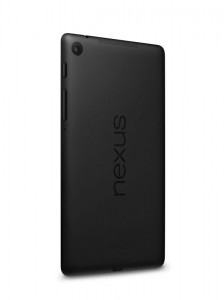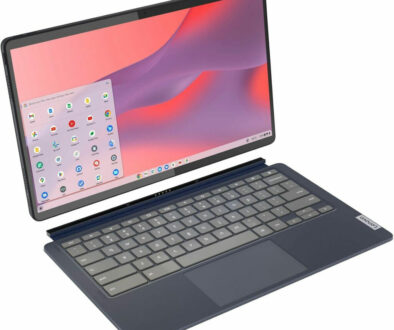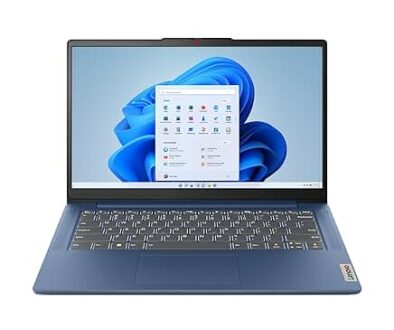New Nexus 7 (II) vs Kindle Fire HDs vs iPad mini
In our last article, we looked at Google’s New Nexus 7 (II) vs Nexus 7. In this article, we compare the New Nexus 7 (2013) to other Tech Giant’s offerings, the Amazon’s Android tablets, the Kindle Fire HDs and Apple iPad mini. Amazon’s release of the bigger Kindle Fire HD tablet with 8.9″ display in April 2013, gave the tablet market another leading Android tablet. One with high end specifications and technology to rival it’s competitions. But with the eminent launch of the New Nexus 7 in the UK, will this still holds true. Let’s look at how they compare.

Screen

After the introduction of Retina Display by Apple, there has been a race among tech giants to see who can squeeze the most pixels per square inch. Every new tablet introduced seems to push the pixel per inch count higher and higher. We saw this with the Google’s Nexus 10, at 2560 x 1600 pixel resolution (4.1 MP), that’s 300 ppi while the iPad with Retina Display with 2048 x 1536 pixel resolution (3.2 MP) has only 264 ppi. Now, with the new Nexus 7 2nd Generation, the ppi record for tablet has once more been broken. At 323 ppi, it is the only tablet in the market with resolution that high, with 1920 x 1200 full HD. This is 27% more pixels per inch than Kindle Fire HD 8.9″, 50% more than Kind Fire HD 7″, 98% or almost twice more than iPad mini
Nexus 7 2nd Generation: 1920 x 1200 (323 ppi) 7″ LED-Backlit Multi-Touch display with IPS Technology [Highest Resolution] with Corning Glass [HIGHEST PPI]
Kindle Fire HD 7″: 1280 x 800 (215 ppi) IPS LCD Capacitive Touch
Kindle Fire HD 8.9″: 1920 x 1200 (254 ppi) IPS LCD Capacitive Touch
iPad mini 7.9″: 1024 x 768 (163 ppi) LED-Backlit Multi-Touch display with IPS Technology with Corning Glass
 Dimensions and Weight
Dimensions and Weight

While the Kindle Fire HD with 8.9″ is not a fair comparison in this category, the Nexus 7 2nd Generation is still the smallest compared to Kindle Fire HD 7″ and the iPad mini. It lost only in thickness to the iPad mini. But, the difference of 1.5 mm isn’t a great deal.
Nexus 7 2nd Generation: 200 x 114 x 8.7mm and tops the scales at 299g [LIGHTEST]
Kindle Fire HD 7″: 193 x 137 x 10.3 and weights 395g
Kindle Fire HD 8.9″: 239 x 163 x 90 and weights 567g
iPad mini: 200 x 134.7 x 7.2mm and weights 308g [THINNEST]
 Processor, GPU, Memory and Storage
Processor, GPU, Memory and Storage

The new Nexus based on Qualcomm’s Snapdragon S4Pro with Adreno 320 GPU (400MHz) and 2GB of RAM is the most advanced tablet configuration in the list. Some may argue that the performance of the device is not based solely on its processor, GPU or memory. And, it has to do with the operating system, memory management and applications designed to make the most of the hardware. We tend to agree with this given Apple’s track record of using a combination of lowly clocked processors, in this case the 1GHz ARM Cortex A9 dual core processor in the iPad mini and iPad 2, SWIFT memory management technology, a stable operating system (Apple’s iOS) and solid app development platform. The sales of iPad mini continues to be strong and the device performs equally if not better compared to other tablets in this category.
Nexus 7 2nd Generation: Qualcomm Snapdragon S4 Pro 8064 1.5Ghz quad core processor, Adreno 320GPU, 2GB RAM, 16 or 32GB storage options [MOST ADVANCED, QUAD CORE CPU, DOUBLE MEMORY]
Kindle Fire HD 7″: ARM Cortex-A9 Texas Instruments 4460 OMAP 4 1.2Ghz dual core processor, PowerVR SGX540, 1GB RAM, 16 or 32GB storage options
Kindle Fire HD 8.9″: ARM Cortex-A9 Texas Instruments 4470 OMAP 4 1.5Ghz dual core processor, PowerVR SGX544, 1GB RAM, 16, 32 or 64GB storage options
iPad mini: Apple’s A5 2nd Generation (32nm) using ARM Cortex-A9 1GHz dual core processor, PowerVR SGX543MP2, 1GB RAM, 16, 32 or 64GB storage options.
 Sound
Sound

While there have been many positive reviews on the sound performance of the new Nexus 7, it will be a tough call to make when pitching this against the Kindle HDs. Amazon has put in considerable effort in making the Kindle HD a content centric device, with emphasis on the display and sound system for video and music consumption. For example, the Kindle Fire HD 7″ incorporates two speakers on each side of the screen, a dual driver system with 4 speakers, such configuration is not found on any other devices.
Nexus 7 2nd Generation: Stereo speakers with Surround sound powered by Fraunhofer* (the MP3 inventors)
Kindle Fire HD 7″: Stereo Speakers, dual-driver stereo speakers on either sides of the display, Dolby Digital Plus for virtual surround sound and auto-optimisation software for clear, crisp, balanced audio.
Kindle Fire HD 8.9″: Stereo Speakers, Dolby Digital Plus for virtual surround and auto-optimisation software for clear, crisp, balanced audio.
iPad mini: Stereo Speakers on the bottom edge of the screen (in portrait mode).
 Camera
Camera

The second generation Nexus 7 sports a 5MP rear-facing camera, with features such as geo tagging, face detection and touch focus and the 1.2MP front-facing camera for video chat. This is similar to the cameras on the iPad mini, with the FaceTime camera at 1.2MP and iSight camera at 5MP. The Kindles on the other hand comes only with front-facing cameras at 1.2MP. All front-facing cameras are capable of HD video capture at 720p. While rear-facing cameras are capable of HD video capture at 1080p.
Nexus 7 2nd Generation: 1.2MP front-facing fixed focus, 5MP rear-facing auto focus cameras.
Kindle Fire HD 7″: rear-facing 1.2MP ONLY capable of HD 720p video capture for video chat
Kindle Fire HD 8.9″: rear-facing 1.2MP ONLY capable of HD 720p video capture for video chat
iPad mini 7.9″: 1.2MP front-facing, 5MP rear-facing (Autofocus, Face detection, Backside illumination, Five-element lens, Hybrid IR filter, ƒ/2.4 aperture, Tap to focus video or still images, Tap to control exposure for video or still images, Photo and video geotagging, 1080p HD video recording and Video stabilisation.
Connectivity and Sensors
Connectivity and sensors are pretty standard, the only difference being the new Nexus 7 has NFC and GPS while Kindle HDs and iPad mini doesn’t.
Nexus 7 2nd Generation: Dual-band Wi-Fi (2.4G/5G) 802.11 a/b/g/n, NFC (Android Beam), Bluetooth 4.0 with 4G LTE and HSPA+ option coming soon. Sensors include GPS, Gyroscope, Accelerometer, Compass, Ambient Light.
Kindle Fire HD 7″: Wi-Fi 802.11 a/b/g/n, dual-band, BT 3.0 + EDR (HID and A2DP profiles only). Sensors include Accelerometer and Gyroscope.
Kindle Fire HD 8.9″: Wi-Fi 802.11 a/b/g/n, dual-band, BT 3.0 + EDR (HID and A2DP profiles only). 4G LTE option is available on 8.9″ model only. Sensors include Accelerometer and Gyroscope.
iPad mini 7.9″: Wi-Fi 802.11a/b/g/n, dual-band (802.11n 2.4GHz and 5GHz), Bluetooth 4.0 wireless technology, 4G LTE option available.
Software
Amazon uses a forked version of the Android OS 4.0 which is heavily customised to embed it’s own user interface and direct integration and easy access to contents. The new Nexus 7 on the other comes with the lastest Android OS 4.3, which in itself has a lot of merits and features built in. While Nexus 7 has access to Google Play store and unrestricted access to apps published directly by developrers. Amazon’s Kindle HDs on the other hand access a limited list of apps via Amazon App store.
Nexus 7 2nd Generation: The latest Android OS 4.3 Jelly Bean (updates out of the box)
Kindle Fire HD 7″: Amazon’s customised Android OS 4.0.4 Ice Cream Sandwich
Kindle Fire HD 8.9″: Amazon’s customised Android OS 4.0.4 Ice Cream Sandwich
iPad mini: iOS 6.0 (updatest to the lastest iOS)
Nexus 7 is backed by Google’s Apps; Google Search, Chrome for Android, Google Maps, Google+, Google Play (Books, Magazines, Music, Movies), YouTube, Google Drive, Gmail and Google Play (app store). Other apps are Voice Search, Google Translate, Google Earth, Google Goggles, Google Currents, Google Voice, Google Shopper, Schemer, My Tracks, Google Finance, Blogger, Orkut and Authenticator.
Kindle Fire HDs are backed by Amazon’s online services: Amazon Prime, Amazon Cloud Storage, Amazon Cloud Player, Amazon Instant Video, Amazon Silk Browser, Amazon App Store, Amazon Kindle Store.
iPad mini is backed by Apple iTunes, App Store, Apple iCloud, Apple iBook book store, iTunes U, Podcasts, Cards, Find My iPhone, Apple Newsstand, Apple App Store, Safari browser, Mail, Photos, FaceTime, Maps, Siri, Messages, Calendar, Reminders, Contacts, Music, Videos, Notes, Camera, Photo Booth, Clock and Games Center.
 Battery Life
Battery Life

All devices in this comparative review averages around 10 hours of continuous use. However, as with all battery life claims, it does rely on the type of usage and settings. There is no clear winner here but it is safe to see that all manufacturers are keeping up with each other to maintain a good amount of battery life on a single charge to allow users to carry on; reading, watching videos, playing games, checking email, browsing the web, using productivity apps and to capture videos and photos.
Nexus 7 2nd Generation: 3950mAh with wireless charging built in (Qi Compatible) 9 hours HD video playback, 10 hours web browsing
Kindle Fire HD 7″: Over 11 hours of continuous use with a combination of videos playback, browsing the web, playing music and reading.
Kindle Fire HD 8.9“: Over 10 hours of continuous use with a combination of videos playback, browsing the web, playing music and reading.
iPad mini 7.9″: 4400mAh Li-Polymer battery, 10 hours battery life.
Our Line-up
The new Nexus is more expensive than the previous version (2013). Foe the most up to date prices, click on the links below:
Nexus 7 2nd Generation: (16GB), (32GB) for WiFi only models
Kindle Fire HD 7“: (16GB) plus a small fee to remove special offers ad window (optional) for WiFi only models
Kindle Fire HD 8.9″: (16GB), (32GB) plus a small fee to remove special offers ad window (optional) for WiFi only models
iPad mini 7.9″: (16GB) for WiFi only models










